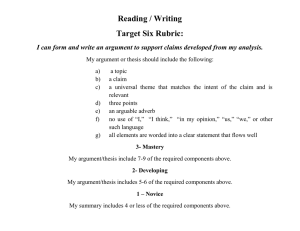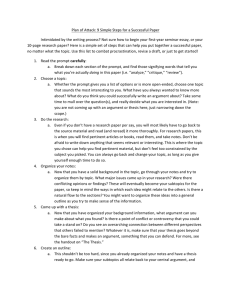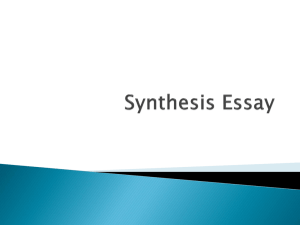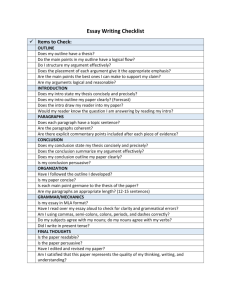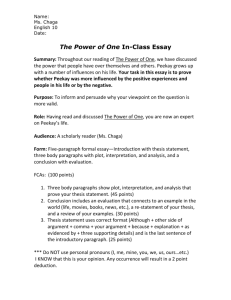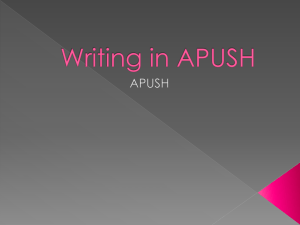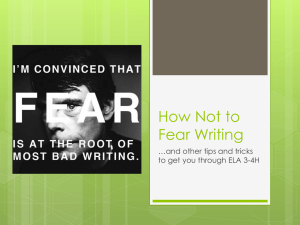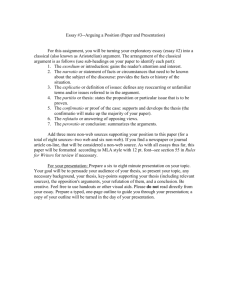In-class Essay Strategy - Eagan English 110-21
advertisement
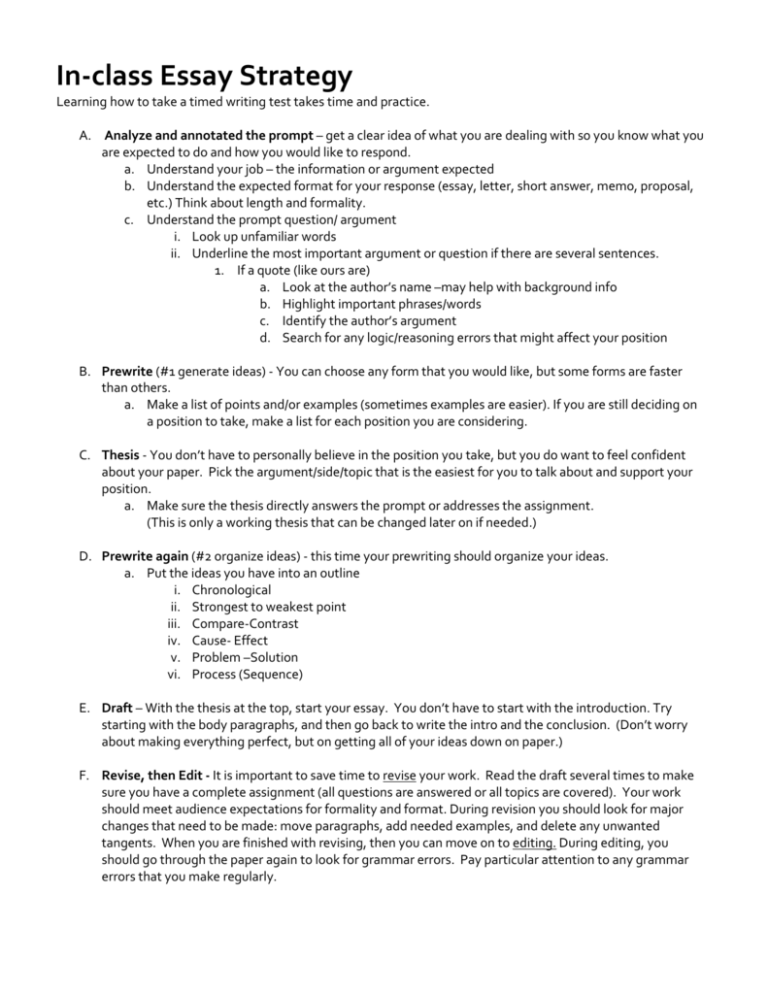
In-class Essay Strategy Learning how to take a timed writing test takes time and practice. A. Analyze and annotated the prompt – get a clear idea of what you are dealing with so you know what you are expected to do and how you would like to respond. a. Understand your job – the information or argument expected b. Understand the expected format for your response (essay, letter, short answer, memo, proposal, etc.) Think about length and formality. c. Understand the prompt question/ argument i. Look up unfamiliar words ii. Underline the most important argument or question if there are several sentences. 1. If a quote (like ours are) a. Look at the author’s name –may help with background info b. Highlight important phrases/words c. Identify the author’s argument d. Search for any logic/reasoning errors that might affect your position B. Prewrite (#1 generate ideas) - You can choose any form that you would like, but some forms are faster than others. a. Make a list of points and/or examples (sometimes examples are easier). If you are still deciding on a position to take, make a list for each position you are considering. C. Thesis - You don’t have to personally believe in the position you take, but you do want to feel confident about your paper. Pick the argument/side/topic that is the easiest for you to talk about and support your position. a. Make sure the thesis directly answers the prompt or addresses the assignment. (This is only a working thesis that can be changed later on if needed.) D. Prewrite again (#2 organize ideas) - this time your prewriting should organize your ideas. a. Put the ideas you have into an outline i. Chronological ii. Strongest to weakest point iii. Compare-Contrast iv. Cause- Effect v. Problem –Solution vi. Process (Sequence) E. Draft – With the thesis at the top, start your essay. You don’t have to start with the introduction. Try starting with the body paragraphs, and then go back to write the intro and the conclusion. (Don’t worry about making everything perfect, but on getting all of your ideas down on paper.) F. Revise, then Edit - It is important to save time to revise your work. Read the draft several times to make sure you have a complete assignment (all questions are answered or all topics are covered). Your work should meet audience expectations for formality and format. During revision you should look for major changes that need to be made: move paragraphs, add needed examples, and delete any unwanted tangents. When you are finished with revising, then you can move on to editing. During editing, you should go through the paper again to look for grammar errors. Pay particular attention to any grammar errors that you make regularly.
